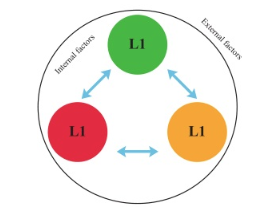Strategic planning and experience in the construction of the OPV Project for the Chilean Navy
DOI:
https://doi.org/10.25043/19098642.168Keywords:
strategy, planning, logistics, productionAbstract
ASMAR ́s shipbuilding policy indicates that this activity will be centered and dimensioned on primarily serving the requirements of the Chilean Navy and the State. The correct use of the information is fundamental in the evolution of the projects. By applying this knowledge and evaluation criteria to the strategy of the Naval Construction Management, it will contribute in future projects by improving the planning levels obtaining more detailed, efficient and effective results. Below we present the experience in the strategic planning for the construction of the OPV4 project, Cabo Odger (“Marine Lance Corporal Odger”) for the Chilean Navy.
“We want all our shipping clients to recognize us as a serious shipyard, with dedicated commitment and technical quality, and we have used ingenuity and experience to solve problems that we have faced. However, we must not fall into the temptation to rest on our laurels, on the contrary, we have the obligation to continue on this path of commitment with our daily work, and to meet our deadlines”.
Today, shipbuilding is defined as a highly complex industry, that is highly competitive with elevated costs. The goal is to extract the most important contents and work with real, efficient and effective information, so that each construction process is not affected by external agents. There are three differentiating factors that make a shipyard more competitive and improve its production processes, resulting in a reduction of work time and, therefore, a reduction of costs; these are: the construction strategy, strategic planning and logistics. ASMAR has the technical and technological capacity to integrate various elements into its workshops in the stage prior to assembly. This process marks an important step between the construction strategy and the project planning.
Downloads
References
DEPARTMENT OF INFORMATION OF THE DIVISION OF INDUSTRIAL PRODUCTS AND TECHNOLOGY. (2011). Spain: Naval Construction Sector, sector notes ICEX. Spanish Institute of Foreign Trade (ICEX), 3.
TEAM OF PROFESSORS OF ESADE. (Marzo, 2014). Management guides for innovation, production and logistics. ©Generalitat de Catalunya, Center for Innovation and Business Development (CIDEM), Barcelona.
Gómez Senent Martínez, E. (1992). PROJECT PHASES AND ITS METHODOLOGY. SPUPV. Valencia.
PALANCAR, P. L. (2008). 90 Years of naval and modular construction. Naval engineering (RIN), 74 - 91.
TRABA, D. J.-T., & LÓPEZ, D. N. (2004/2006).
Military Naval Construction, Ideas To Be A Leader. Madrid: XXVII Week of sea studies.

Published
How to Cite
Issue
Section
License
The authors who publish in this Journal certify that:
- The work submitted for publication in The Ship Science and Technology journal, was written by the author, given that its content is the product of his/her direct intellectual contribution.
- All data and references to material already published are duly identified with their respective credits and are included in the bibliographic notes and quotations highlighted as such.
- All materials submitted for publication are completely free of copyrights; consequently, the author accepts responsibility for any lawsuit or claim related with Intellectual Property Rights thereof, Exonerating of responsibility to The Science and Technology for the Development of Naval, Maritime, and Riverine Industry Corporation, COTECMAR.
- In the event that the article is chosen for publication by The Ship Science and Technology journal, the author state that he/she totally transfers reproduction rights of such to The Science and Technology for the Development of Naval, Maritime, and Riverine Industry Corporation, COTECMAR.
- The authors retain the copyright and transfer to COTECMAR the right of publication and reproduction of the work which will be simultaneously subject to the Creative Commons Attribution License (CC -BY) , which allows the license to copy, distribute, display and represent the work and to make derivative works as long as it recognizes and cites the work in the manner specified by the author or licensor.
- For more information about the Creative Commons Attribution License (CC -BY) and his use and scope, please visit the following web page https://creativecommons.org/licenses/by-sa/4.0/legalcode








